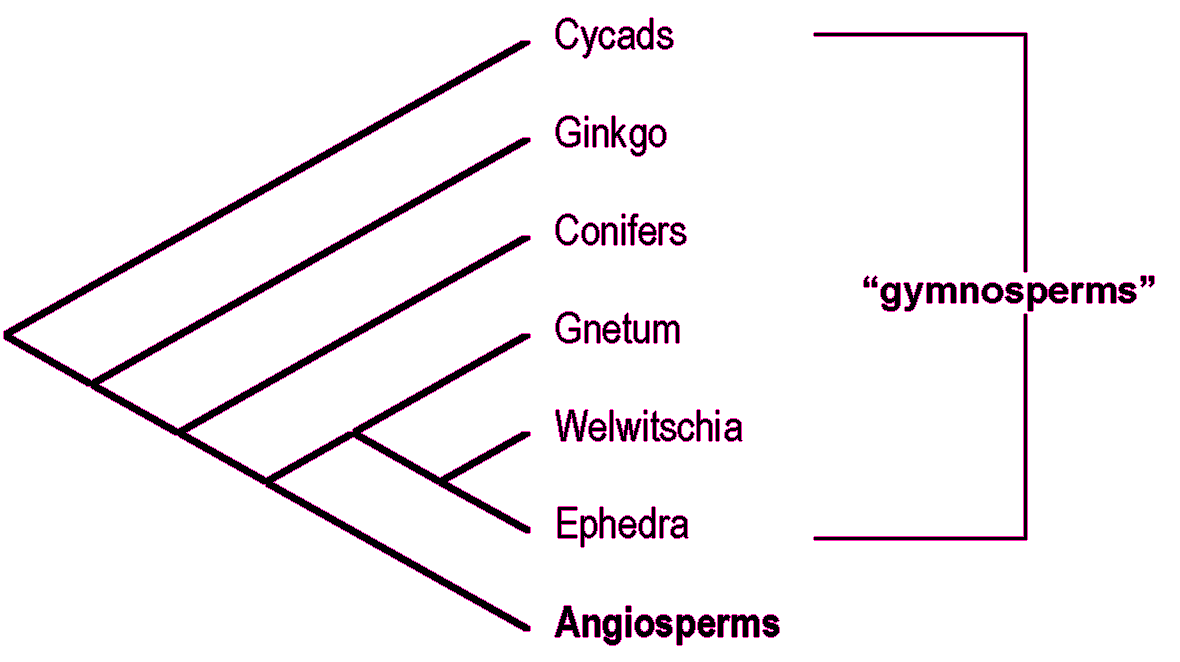
|
| The Cycad Pages
| |
Cycad History
|
|

|
| Phylogeny of the living seed plants
|
The cycads are known to be an extremely ancient group, and are now
recognised as the sister group to all other living seed plants.
Fossil cycads are known from the Lower
Permian,
of China, 270-280 million
years ago, and the group is thought to have arisen from within the
ancient
seed ferns,
of the later
Palaeozoic,
era, which ended 250 million
years ago. The cycads radiated and spread widely in the Permian and early
Mesozoic,
and have continued as a separate lineage since that time.
The Mesozoic era, and especially the
Jurassic
period of this era,
is often referred to as the 'Age of Cycads'. During this time, cycad-like plants, along
with the conifers and Ginkgoales, dominated the vegetation of the world. Fossil
cycads are known from Mesozoic deposits of every
continent and every latitude, from Siberia to the Antarctic.
This perception of the cycads as dominant plants of the
Mesozoic Era is, however, somewhat misplaced, resulting from past confusion
of the cycads and a quite separate, now extinct, group known variously as
the Cycadeoids or the Bennettitales.
The 3 living families cannot be traced so far back in time, but most extant
genera are recognisable as fossils from the early
Tertiary,
50-60 million years ago. There are also about 19
extinct cycad genera known only as fossils, all of these from the Paleozoic
and Mesozoic eras. This does not include
the form taxa, isolated leaf or stem fossils that are clearly cycads
but cannot be placed in a known family or genus.
The Australian genera of Zamiaceae are most closely allied to the genus
Encephalartos, which has radiated extensively in southern Africa,
somewhat in parallel to the Australian genus Macrozamia. Zamiaceae
is today absent from other Gondwanan crustal fragments such as India,
New Zealand, New Caledonia and South America. Cycads are, however,
known as fossils from Antarctica and South America, and these
present-day absences are not readily explained.


